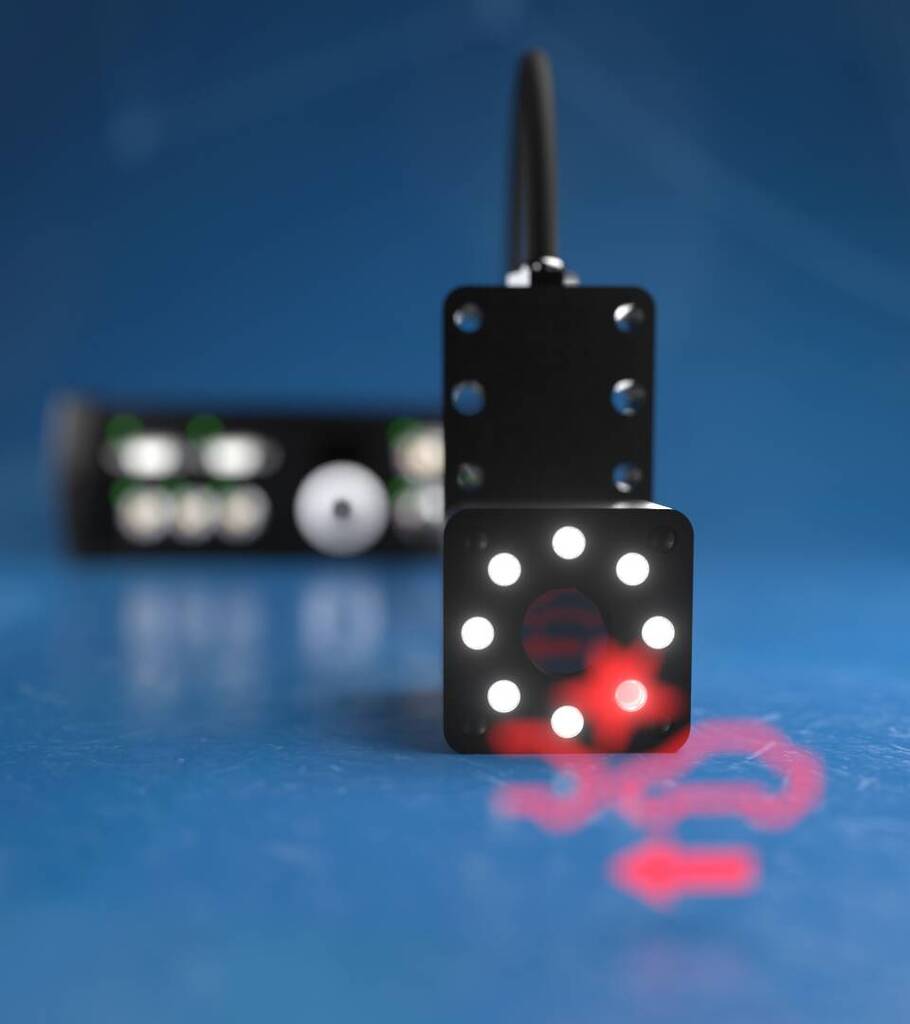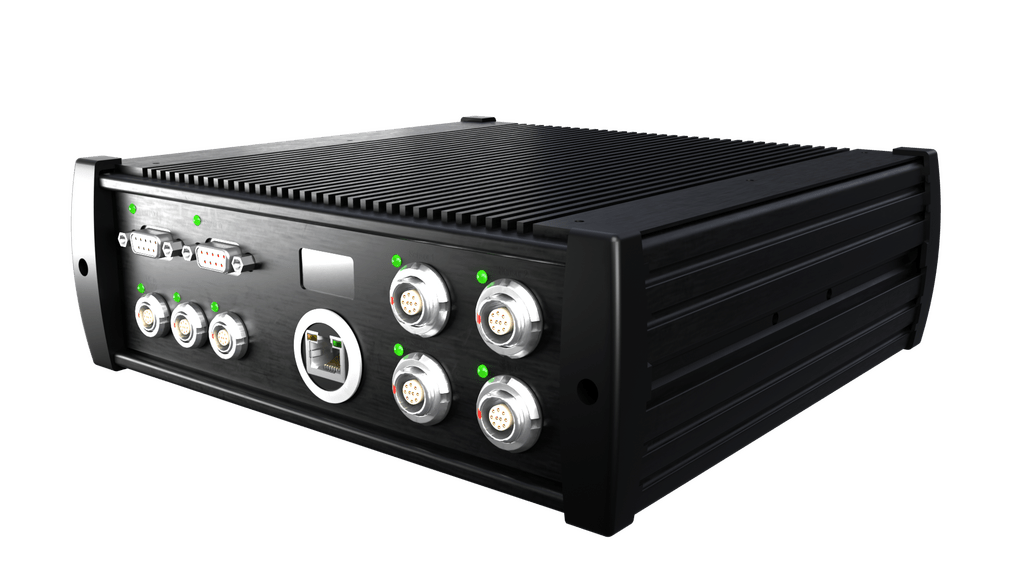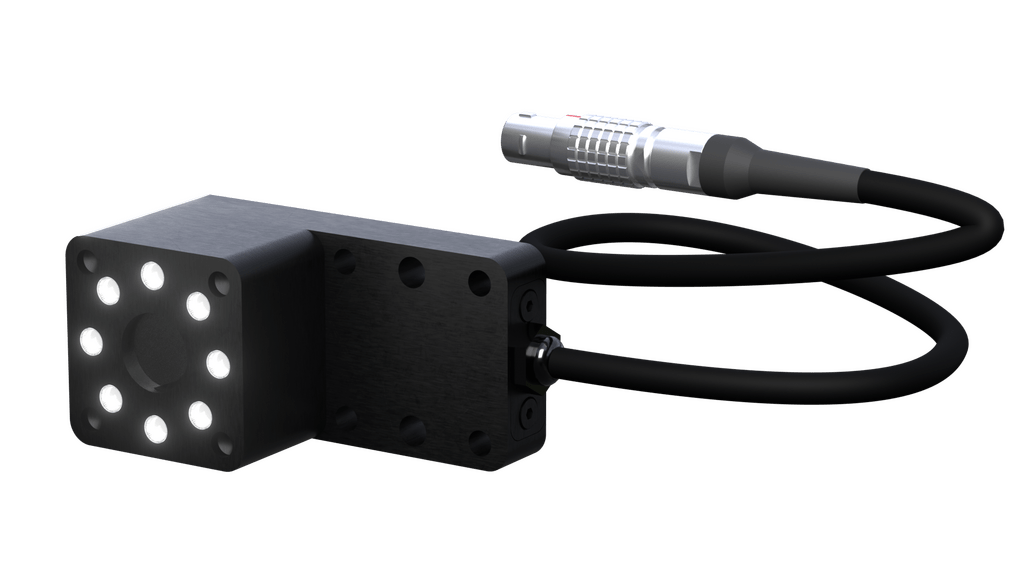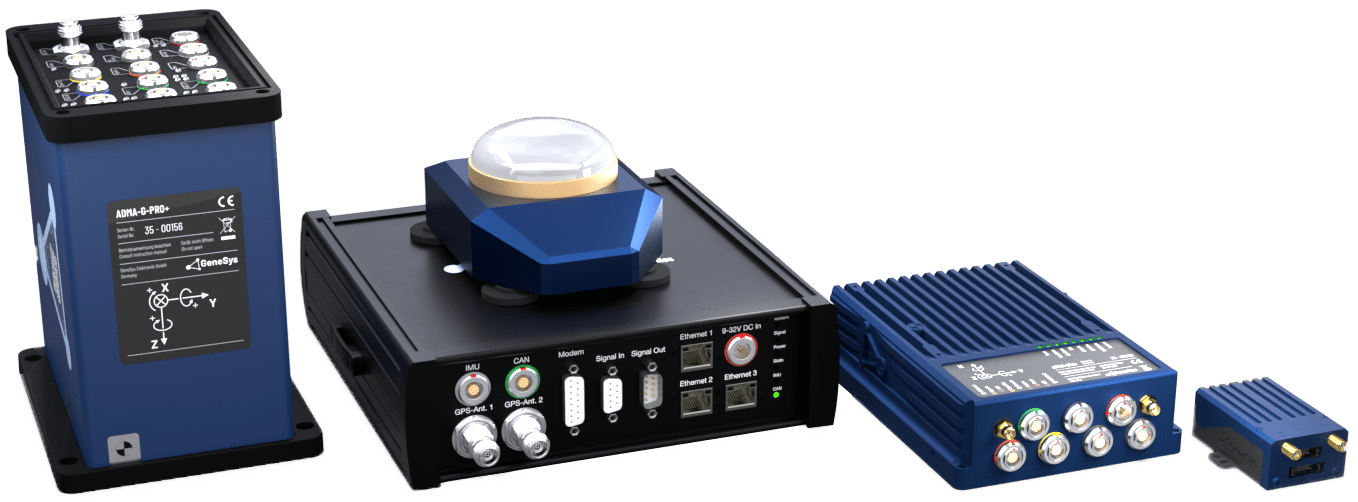Detector for audiovisual signals in the vehicle interior with embedded web interface for configuration
SensorX is a powerful measuring system that has been specially developed for the detection and recording of audio-visual signals in vehicle interiors. With its high-performance cameras and precise microphone, SensorX detects acoustic and visual warnings that are targeted at the driver in just a few milliseconds.
The high-performance camera reacts to changes in the shape and colour of ICONs in the instrument cluster. The microphone recognises specific sound patterns and acoustic warnings. When visual and acoustic signals are detected, SensorX transmits measurement data within a few milliseconds as digital trigger signals as well as LAN and/or CAN messages.


Key Features
-
Multiple detection of shape and colour changes on the dashboard
-
Recognition of sound patterns
-
Data output rate up to 1kHz
-
Data latency 30 msec
-
Data output via Digital-I/O, LAN, CAN
-
Embedded web interface for easy configuration
Applications
-
Advanced Driver Assistance Systems (ADAS) evaluation e.g.:
-
Auto Emergency Braking, AEB
-
Forward Collision Warning, FCW
-
Adaptive Cruise Control, ACC
-
Lane Keeping Assist System, LKA
-
Lane Departure Warning, LDW
-
Blind Spot Detection, BSD
-
Rear Cross Traffic Alert, RCTA
-
Traffic Sign Recognition, TSR
-
Parking Assistance, PA
-
Euro NCAP and NHTSA Evaluation
-
Autonomous vehicle (AV) operation
-
Comprehensive vehicle safety functions with connected sensor systems and V2X
SensorX Base System
Basic Unit
Interfaces
-
Signal IN / OUT: The base unit has four signal input and output connections that allow flexible integration and control of external devices.
-
CAN: Two CAN interfaces enable the reception of vehicle signals directly from the vehicle network or the output of result data.
-
Sensor: Four sensor interfaces enable the connection of several cameras and the microphone.
-
Display: An integrated display shows status and system informations, allowing the system to be checked and diagnosed quickly.

Performance and configuration
-
Powerful computing core: The central processor of the base unit is optimized for real-time processing of audio and video signals, which ensures fast and reliable signal detection and processing.
-
Embedded Webinterface: The web interface enables simple configuration and the display of important system parameters via a web browser. No additional software is required
-
Robust housing: The basic unit has a robust, passively cooled housing that can be flexibly installed in the vehicle.
With its powerful computing power and intuitive webinterface, the SensorX base unit offers a flexible and reliable system for recording and analysing acoustic and visual signals in the vehicle.

High-performance Camera
With the help of industrial camera systems, SensorX detects changes in shape and color and processes them in real time. This makes it possible to process several signals in parallel and output the results as digital trigger signals and UDP and CAN messages with low latency.
Technical Data
-
High frame rate: Image processing takes place at a frame rate of at least 100 Hz. Application-specific rates of up to 300 Hz are possible.
-
Automatic focus: The cameras autofocus enables precise and fast focusing.
-
Robust cabling: The camera’s connection cables are designed for harsh environments.
-
Active lighting: The optional active lighting ensures maximum reliability for image recognition.
The SensorX camera systems are supplied in IP67 housings. The housings have integrated, multifunctional fastening and mounting devices that enable flexible and application-optimized installation in different installation situations. This includes several threaded points for mounting or attaching mirrors. A standard ¼-inch thread for camera mounts allows the camera to be attached to the dashboard even under difficult environmental conditions.
Microphone
The highly sensitive microphone of the SensorX is able to check and recognize sound patterns as well as single and multi-frequency sounds in real time.
-
Intelligent filtering: Advanced filter algorithms reliably suppress ambient noise and interference signals. This ensures precise and stable detection of relevant acoustic information.
-
High sensitivity: Thanks to its omnidirectional characteristic and a sensitivity of -16 dB FS/Pa, the microphone is able to reliably detect even very quiet signals.
-
Wide frequency response: With a frequency range of 70 Hz to 18,000 Hz, the microphone captures a wide sound spectrum and is therefore suitable for a wide variety of acoustic applications.
-
Low latency: Signal processing takes place with a very low latency of less than 15 ms – ideal for real-time applications and fast reactions to acoustic events.

The SensorX microphones are equipped with robust Lemo plug-in connections, enabling decentralized installation in the vehicle. Thanks to these high-quality features, the SensorX microphone is ideally suited as a powerful and versatile testing device for recording acoustic signals in automotive applications.

Basic function
In the basic configuration, the SensorX system is equipped with a camera and a microphone. With the associated basic software license, 1 symbol with up to 3 associated statuses and 2 acoustic signals can be monitored.
Symbol recognition
SensorX has the ability to learn user-defined symbols and reliably detect them in image data. The symbols can be trained using both synthetically generated images and live images from a connected camera.
For recognition, the learned symbol is localized within a defined search area in the camera image. Integrated pre-processing compensates for camera-related movements such as vibrations or slight positional deviations. For this purpose, the search area is dynamically adapted to the detected image shifts to ensure robust and stable detection.
Status detection
Different states can be defined for each recognized symbol. A state results from several distinguishable areas within the symbol, each of which is assigned a specific color. These color assignments serve as the basis for evaluating and classifying the current status.
The definition areas can be configured manually or generated automatically. The corresponding color values can either be predefined or determined on the basis of live images. A condition is considered detected as soon as all defined areas have the assigned colour characteristics.
Sound recognition
SensorX enables the visualization of audio signals for the identification and extraction of characteristic signal patterns. The window size for pattern recognition is variably adjustable to ensure an optimum balance between reproducibility and minimum latency (< 15 ms). The frequency-specific signal characteristics can be determined automatically at the touch of a button or adjusted manually.
Extension Options
Combination of several events
-
Up to 8 patterns, colors and color search ranges
-
Up to 100 sounds (frequencies)
-
Logical linking of individual results to an overall result
Search and alarm functions can be flexibly combined and precisely controlled using logical AND/OR links. SensorX only triggers an alarm if defined criteria are met – for example, if a red warning triangle is simultaneously detected in the instrument cluster based on shape and color. This eliminates the need for downstream manual linking and increases processing efficiency.
Delay determination
The option for high-precision measurement of the delay of the CAN signal between the control unit and the display in the instrument cluster or the sound output enables exact analysis of the communication times in the vehicle. This also makes it possible to determine latency times in the vehicle.
Detection of gaze direction / head rotation
This function enables the driver’s line of vision to be detected precisely by monitoring the tilt and rotation of the head. SensorX thus supports a more precise analysis of the driver’s behavior, especially with regard to the direction of gaze due to head movements while driving.
Technical Data
SensorX
| Basic Unit | |
| Power | 1x Lemo 9 to 32 VDC |
| Ethernet | 1x RJ45 g 1Gbit, gPTP*1 Configuration and Data output |
| Sensor Port | 4x Lemo High-speed sensor ports to connect to four cameras and one microphone. |
| CAN | 2x SubD9 CAN, 2b, 1 Mbit / CAN FD Data output, input*1 |
| Analog Input | 4x SubD9 Analog In +/-24V +20% (16 bit) e.g. frequency, PPS, … |
| Analog Output | 4x SubD9 Signal Out 20mA current carrying capacity per channel e.g. Signal, PPS, frequency, … |
| Data output rate | 100 / 200 / (1000)*1 Hz |
| Calculation latency | 10 msec |
| Dimensions (W x L x H) | 0.06 / 0.5 / 1.5 m/sec |
| Weight | 0.05 / 0.15 / 0.30 ° |
| Operation temperature | 0.05 / 0.15 / 0.30 ° |
| Protection class | IP 50 |
| – | |
| Camera | |
| Frame rate | 100 Hz / (300 Hz)*1 |
| Focus | Auto |
| Resolution | 1400 x 1080 |
| Shutter | Global |
| Dimensions (W x L x H) | 40 x 80 x 40 mm |
| Weight | 0,20 kg |
| Operation temperature | 0 to +50 °C |
| Cable length | 4.5 m |
| Protection class | IP 20 |
| – | |
| Microphone | |
| Audio frequency response | 70 to 18000 Hz |
| Intrinsic noise | 32 dB |
| Maximum sound pressure level | 110dB |
| Pick-up pattern | Omni-directional |
| Weight | 0,017 kg |
| Operation temperature | 0 to +50 °C |
| Cable length | 4.5 m |
| Microphone capsle (L; ⌀) | 26,00; 10,50 mm |
| Protection class | IP 20 |
*1 Optional



